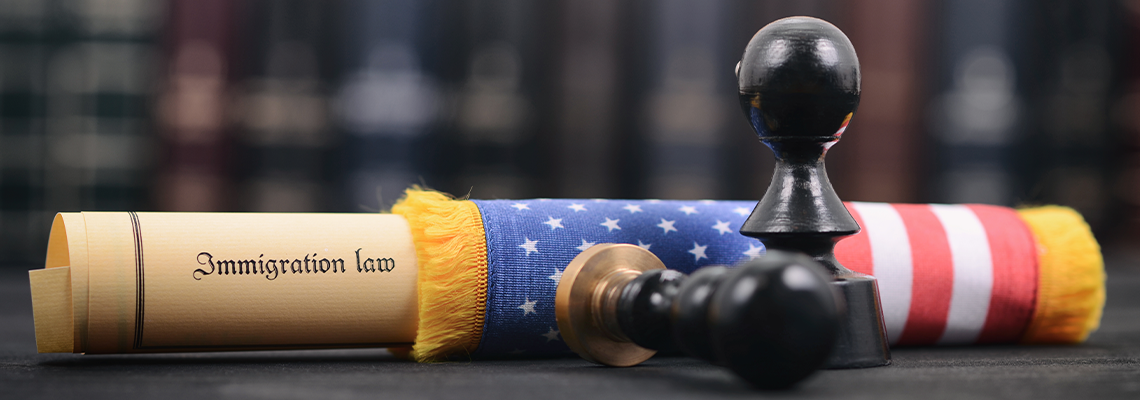We Can Help. Reach Out Today
Adjustment of Status vs. Consular Processing

There are several lawful ways people can obtain an immigrant visa (green card) to immigrate to the United States, two of which are adjustment of status and consular processing. In some cases, eligible individuals may have the opportunity to choose between these two pathways when seeking to obtain a green card.
However, many people do not understand the difference between adjustment of status and consular processing and what these two processes entail. At Military Law Group, I provide immigration solutions for clients in Tulsa, Oklahoma, and throughout the Tulsa metro area. My team of immigration attorneys assists clients with both adjustments of status and consular processing in Creek County, Rogers County, the Creek and Cherokee Nations, and other parts of the state.
Adjustment of Status
Adjustment of status is a formal process that entails obtaining U.S. permanent residence. However, this pathway to permanent residence is not for everyone. Only temporary visitors who lawfully entered the United States and meet other requirements are eligible to apply for a green card through adjustment of status.
To apply through adjustment of status, you must be eligible under one of the categories:
Family-based green card. You may be eligible if you are the spouse, child, parent, or another qualifying relative of a U.S. citizen or lawful permanent resident.
Employment-based green card. You may be eligible for adjustment of status through sponsorship by your employer or based on certain abilities and accomplishments.
Other reasons. You may also qualify for a green card through a refugee or asylee status, diversity lottery, or other eligibility categories that can be found on the USCIS website.
Even if you are eligible for a green card under any of the above-mentioned categories, you must meet certain other criteria to use adjustment of status:
You are physically present in the United States; and
You entered the United States legally (you were inspected and admitted into the country at a port of entry).
The process of adjusting your status when you are physically present in the U.S. includes the following steps:
File an immigration petition and Form I-485 (the adjustment of status form). Depending on the petition, you may need a sponsor to petition on your behalf to complete this step.
Submit the required evidence and documentation to the USCIS lockbox.
Attend a biometrics appointment to submit your biometric data, including fingerprints.
Attend an adjustment of status interview, where you will answer questions about your green card application under oath.
After the interview, wait for an approval letter from USCIS. If your application has been denied, you might be subject to deportation (removal) proceedings. Contact a skilled immigration attorney as soon as possible to help you navigate the adjustment of status process.
Consular Processing
If adjustment of status is the process of applying for a green card while physically present in the U.S., consular processing is the process of applying for permanent residence from outside of the country. The process entails requesting a green card from a U.S. embassy or consulate in your country of origin.
Only immigrants who already qualify for a green card (e.g., through marriage or other means) and have filed the required petition can use consular processing to obtain a green card. Applying for a green card through consular processing includes the following steps:
Determine your basis for immigrating to the U.S.
File an immigration petition based on the category that fits your situation
Wait for the approval of the petition
Once approved, your petition will be forwarded to the National Visa Center (NVC)
Wait for the NVC’s notification and scheduled interview
Submit required documents and complete necessary steps (e.g., medical examination)
Attend a consular interview, which will determine if you are eligible for an immigrant visa or not
The applicant must wait in their home country while their application is processed. Consular processing can be a complex process. That is why you should seek guidance from a knowledgeable immigration attorney to help you at every stage of the process and avoid strategic mistakes.
Key Considerations When Seeking Your Green Card
If you are not sure which option—adjustment of status vs. consular process—is best for you, you may need to consider certain factors to make an informed decision. Consider applying for a green card from within the U.S. (adjustment of status) if the following is true:
You entered the U.S. lawfully;
You are physically present in the country; and
You meet any of the green card eligibility categories.
Consider applying for a green card from abroad (consular processing) if the following is true:
You are not physically present in the U.S.; and
You entered the U.S. illegally.
Even if you are currently in the United States but entered the country illegally, it may be a better choice to leave the country and apply through consular processing from abroad instead of trying to adjust your status. However, there may be exceptions to this rule, so choosing the best approach between adjustment of status and consular processing depends on your personal situation and circumstances.
Military Law Group: On Your Side From Day One
If you want to apply for a green card but do not know how to proceed to avoid unintended consequences (like deportation and/or ban on re-entry), contact Military Law Group. Our team of immigration attorneys helps clients apply for a green card through adjustment of status and consular processing. Reach out to my office in Tulsa, Oklahoma, to discuss your particular situation and understand your options.
